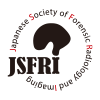about us - concept
The Japanese Society of Forensic Radiology and Imaging
1) What is Forensic Radiology and Imaging?
“Forensic radiology and imaging” is the term that combines “forensic medicine” with “radiology and imaging.”
First, “forensic medicine” is generally considered not to be a familiar field. Many people misunderstand that forensic medicine is concerning only with the dead body. According to the Japanese Society of Legal Medicine, “forensic medicine a field that aims to contribute to the protection of individual fundamental human rights, social security and maintenance of welfare by making scientific and fair medical judgment about a legal matter requiring medical elucidation counseling.” (1982 Japanese Society of Legal Medicine Board of Education report) “Death” is not included in this definition. This shows that forensic medicine is not a field only for the deceased. Investigations of death occupy much part of business in forensic medicine, because, when a person dies, a legal matter associated with a right of next of kin is produced around the cause of death. On the other hand, for the living, we investigate and judge abuse or violence from the aspect of forensic medicine called clinical forensic medicine. However, there are still not many cases in our country, and, it is often the case that general clinicians make such decisions in reality.
Next, when we perform forensic judgment such as stated above, “forensic radiology and imaging” is one field of the forensic medicine that we study how we can mainly apply technology of imaging used in medical treatment to flat plate and CT, a supersonic wave, MRI. Recently, many people have come to know this for the postmortem radiography as it became widespread. It may be said that postmortem radiography in assisting death investigation is a portion of forensic radiology and imaging. The term “forensic radiology and imaging” may sound new and seem is recently recognized, however, it is not. Dr. Roentgen discovered X-ray in 1895, when flat plate was photographed for the first time. In 1896, the following year, the trial of an actress’s foot dislocation used an image of a foot. In another case, there was a medical trial for radiation damage, and the image was used at the trial. With a criminal trial, an image was used for the investigation of a bullet and affirmation by an attempted murder case of a suspect suicide. As you can see, since the following year of the discovery of X-rays, there have been cases that can be identified as the beginning of the history of forensic radiology and imaging.
Recently, the number of university has increased which installs an exclusive CT device in forensic medicine and many are reviewing and arguing how scanning and interpreting an image scanned before forensic autopsy is useful for diagnosis supportively. We cannot determine the cause of death only by postmortem radiography. Information of postmortem radiography is quite limited; for example, drug intoxication cannot be revealed. In many cases, we cannot judge the time of injury (ante mortem or postmortem). Therefore dissection is always necessary. In addition, since forensic medicine is the field of arts and sciences which is intended for the living as well as the deceased, we have to perform interpretation from a forensic viewpoint about clinical images. While clinicians view images to interpret for diagnostic treatment, we analyze for the purpose of estimating the mechanism of wounding and weapon.
2) The Japanese Society of Forensic Radiology and Imaging
We held the first conference on forensic radiology and imaging in August 2011 in order to develop as the field of arts and sciences and in the practical medicine. From then, we have the conference twice annually. The number of participants has gradually increased. We organized “Japanese Society of Forensic Radiology and Imaging” in 2014 to get more fruitful action. Through these actions such as conference, we aim to develop further in each study field about clinical medicine and basic medicine in the future.
3) Seminar of Forensic radiology and imaging
There had been no conference about clinical and postmortem radiography in forensic medicine, and no opportunity to learn it systematically. Therefore, to learn the techniques and knowledge of the field from specialists of various clinical fields, and, furthermore, to transact the knowledge between doctors engaged in this field, we hold seminar of forensic radiology and imaging. From the beginning, we have planned programs with lectures by clinicians from the first time. Until now, valuable lectures have been made by clinical doctors from wide range of fields, including pathology, radiology, orthopedics, neurosurgery and pediatrics. Meanwhile, all clinical participants had an opportunity to understand forensic medicine. In addition, we perform case reports and presentation of the research work, so we can expect to improve of interpretation technology. As a result, we hope to develop a field of forensic radiology and imaging by taking in new knowledge from clinicians who have had been interested in forensic medicine till now, have more discussions and exchange of ideas.
The Japanese Society of Forensic Radiology and Imaging have seminars twice a year in March and September.

